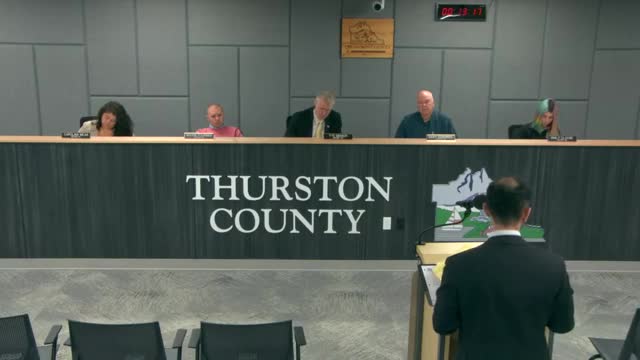Controversial truck stop project sparks heated zoning debate
August 28, 2024 | Thurston County, Washington
This article was created by AI summarizing key points discussed. AI makes mistakes, so for full details and context, please refer to the video of the full meeting. Please report any errors so we can fix them. Report an error »

In a recent government meeting, officials discussed the proposed development of a truck stop and service station, which aims to include over 60 truck parking spaces, more than 30 retail passenger vehicle parking spaces, fueling stations, a convenience store, and a restaurant. The project has sparked debate regarding its compliance with local zoning codes, particularly concerning the classification of a convenience store as a permitted commercial service use.
According to the zoning regulations, truck and heavy equipment service and repair are permitted uses, as are commercial service uses like banks, restaurants, and service stations. The proposal aligns with these categories, as it includes fueling stations for both trucks and passenger vehicles, which fall under the permitted uses outlined in the code.
A key point of contention arose over whether a convenience store qualifies as a commercial service use. The appellant argued that it should not be included since it is not explicitly listed in the zoning code. However, officials countered that the code provides examples of commercial service uses but does not limit the category to those examples alone. They emphasized that a convenience store operates similarly to other listed commercial services, as it involves customer transactions and is often integrated with service stations.
Further discussions highlighted the interpretation of the code regarding the project's primary service area. The appellant contended that the truck stop should primarily serve industrial uses in the vicinity. However, officials pointed out that the area surrounding the planned industrial zones is predominantly residential, suggesting that the truck stop would naturally serve a mix of users, including those from nearby residential developments.
The meeting underscored the complexities of zoning interpretations and the need for clarity in regulations, particularly as they relate to mixed-use developments in areas with both industrial and residential zoning. The outcome of this proposal could set a precedent for future developments in the region, balancing the needs of industrial operations with the realities of surrounding residential communities.
According to the zoning regulations, truck and heavy equipment service and repair are permitted uses, as are commercial service uses like banks, restaurants, and service stations. The proposal aligns with these categories, as it includes fueling stations for both trucks and passenger vehicles, which fall under the permitted uses outlined in the code.
A key point of contention arose over whether a convenience store qualifies as a commercial service use. The appellant argued that it should not be included since it is not explicitly listed in the zoning code. However, officials countered that the code provides examples of commercial service uses but does not limit the category to those examples alone. They emphasized that a convenience store operates similarly to other listed commercial services, as it involves customer transactions and is often integrated with service stations.
Further discussions highlighted the interpretation of the code regarding the project's primary service area. The appellant contended that the truck stop should primarily serve industrial uses in the vicinity. However, officials pointed out that the area surrounding the planned industrial zones is predominantly residential, suggesting that the truck stop would naturally serve a mix of users, including those from nearby residential developments.
The meeting underscored the complexities of zoning interpretations and the need for clarity in regulations, particularly as they relate to mixed-use developments in areas with both industrial and residential zoning. The outcome of this proposal could set a precedent for future developments in the region, balancing the needs of industrial operations with the realities of surrounding residential communities.
View full meeting
This article is based on a recent meeting—watch the full video and explore the complete transcript for deeper insights into the discussion.
View full meeting
